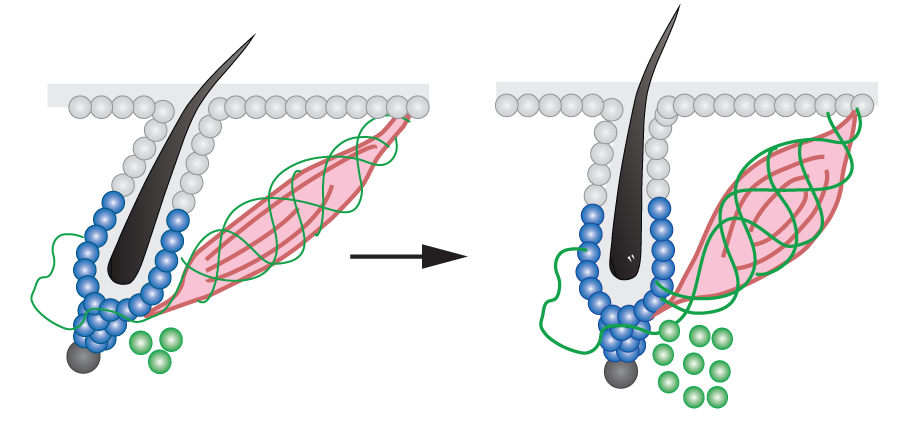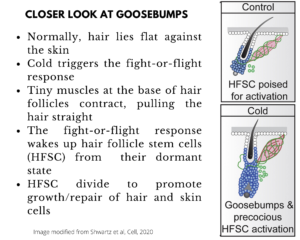I’ve only watched one scary movie in my life. That movie was The Ring. I haven’t witnessed anything more eerie than the scene with the girl slowly scrambling up the well, her hair dripping wet. It sent a chill down my spine and made the hair on the back of my neck bristle. Since then, I have steered clear of scary movies. But I have often wondered why they give us goosebumps.

Why do scary movies give us goosebumps? Image credit: Daniel Jensen on Unsplash
We all get goosebumps due to the cold. But a horror movie or an especially moving song can also make our skin pucker up. Why do such seemingly random events trigger goosebumps even when we aren’t cold? Is this weird phenomenon a vestige of evolution or does it serve a purpose?
Usually, our body hair lies flat against our skin. When it’s cold, a tiny muscle attached to the hair follicle contracts. This causes the hair to stand up straight, and it pulls the skin along with it, making us look like de-feathered birds. The erect hair traps air, providing insulation and keeping us warm. This warming mechanism is more effective in furry animals (dogs, bears, apes) than in humans because dense body hair traps more air.
The tiny muscle that causes goosebumps is called the arrector pili muscle. This muscle is controlled by the sympathetic nervous system. The sympathetic nervous system is responsible for the fight-or-flight response that kicks in when we encounter stressful situations. When animals are faced with danger, their body hair stands erect, making them appear bigger and more formidable to their enemies.
When our human ancestors learned to make weapons, they didn’t need this intimidation mechanism anymore. But strong emotions still trigger our sympathetic nervous system and evoke goosebumps!

When it is cold, sympathetic nerve fibers (green ribbons) release norepinephrine (green circles). The arrector pili muscle (pink) contracts, pulling the hair follicle with it and makes the hair shaft stand erect. This is what we see as goosebumps. Image credit: Shwartz, Gonzalez-Celeiro, Chen, et al., Cell., 2020
Why, then, do we hang on to this primitive defense mechanism? Why didn’t evolution get rid of it? Do goosebumps serve another function we are unaware of?
Scientists have discovered that goosebumps help regulate body hair growth and may even help heal wounds! Hair follicles under our skin harbor stem cells. These stem cells are usually “asleep” or dormant. When woken up, they grow into new hair and can replace injured skin cells. But the hair follicle stem cells need an “alarm” to wake them up.
Chemical signals (neurotransmitters) from the sympathetic nervous system are the alarm that wake up these stem cells. Cold temperatures trigger the release of the neurotransmitter norepinephrine. Norepinephrine, also known as noradrenaline, contracts the tiny muscle attached to the hair follicle and also jolts the stem cells into action. The arrector pili muscle forms the bridge that brings the nerve cell endings into close contact with hair follicle stem cells. While goosebumps may provide some relief in the short-term, they may stimulate hair growth upon prolonged exposure to cold.

It is important to mention that these studies were carried out in mice or rats. Scientists are still studying the process in humans to understand if it can be applied to cure baldness or help treat burn victims.




